When you head off on a big trip, with visions of exotic travel photos dancing in your head, it can be easy to forget the first rule of photographing people while traveling – be respectful. I think this should really be the first rule of photographing any people in any culture, even your own country. No one likes a strange camera shoved in their face.
I personally have a lot of anxiety when it comes to photographing people I don’t know. Even during weddings that I am hired for and big public events where cameras of all kinds are clicking everywhere, I still get a little squirmy about doing it. I don’t like my photo taken by strangers, so why should anyone else? Especially when people are just trying to go about their business? Some people really could care less if you take their photo, but others really don’t want you to. As a photographer, I want to be respectful of their wishes.
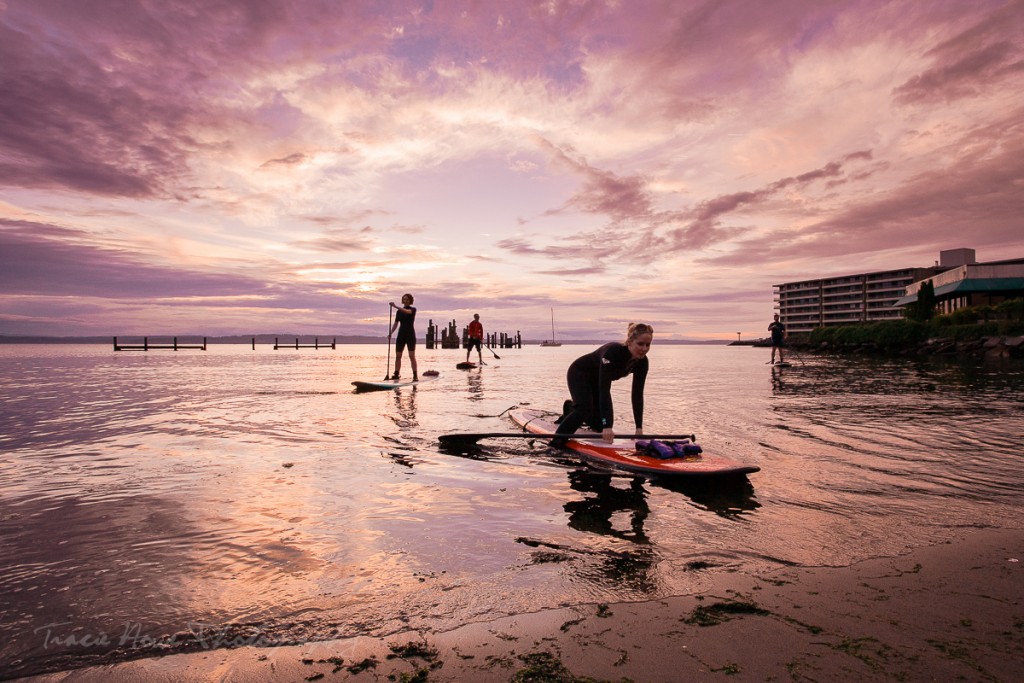
I was at the beach photographing the sunset as these people came in. They entered the frame and didn’t mind me taking a photo of the scene.
Consider the implications
I want to preface this post by saying that the following techniques have some ethical and legal implications to consider. Just be aware that if someone is in a public place, you do technically have a legal right to photograph that person. You may even display a photo of that person online, but there are copyright laws that restrict you from selling an image without proper consent from an identifiable person. Please do your research before attempting to sell your photography. Regarding ethics, you will ultimately have to decide what you feel comfortable with and what is “right”. I don’t want to get into a lengthy post about what we should or shouldn’t do as photographers, so I will try to focus this post on the ideas that are commonly accepted in the world of travel photography.
Much of the appeal of travel photography is about capturing real moments that occur naturally. If you disrupt the natural order of things, you may get a cheesy smile or scowl in response to someone becoming aware of your camera. I struggle with this as a documentary wedding photographer too. It’s not always an easy task to catch people in a naturally occurring moment.
So, how do you walk this line for a nice shot? Well, there are several tactics you can try out….
Ask Permission
Some of my favorite shots are up close and personal, but I would never go right up to someone and aim my camera at their face without asking first. If I am close enough, I will always ask permission before taking a photo. The only real risk here, besides “no”, is interrupting a natural moment that you may be trying to capture.
If you don’t speak the language, most people will understand if you approach them, smile, and point at your camera. You will get a different reaction from everyone depending on where you are in the world. In some places people tend to be very happy to oblige, while in other places, people are more hesitant. Before you go somewhere, you should be able to easily research how locals feel about this. If you’re still unsure, start by walking around with your camera, taking photos of the larger scene or details that don’t include people. If nearby people glare or yell at you just because you and your camera are in the vicinity, they are clearly not okay with it. That happened to me once near a military facility… which I didn’t know was a military facility.
Smiles from strangers are not forthcoming, but when you approach someone they may still be friendly. Some people will give you a smile when they accept your offer and others will accept and just look at you. It’s best to feel out how most of the people in a place will react before assuming their world is a photography free-for-all.
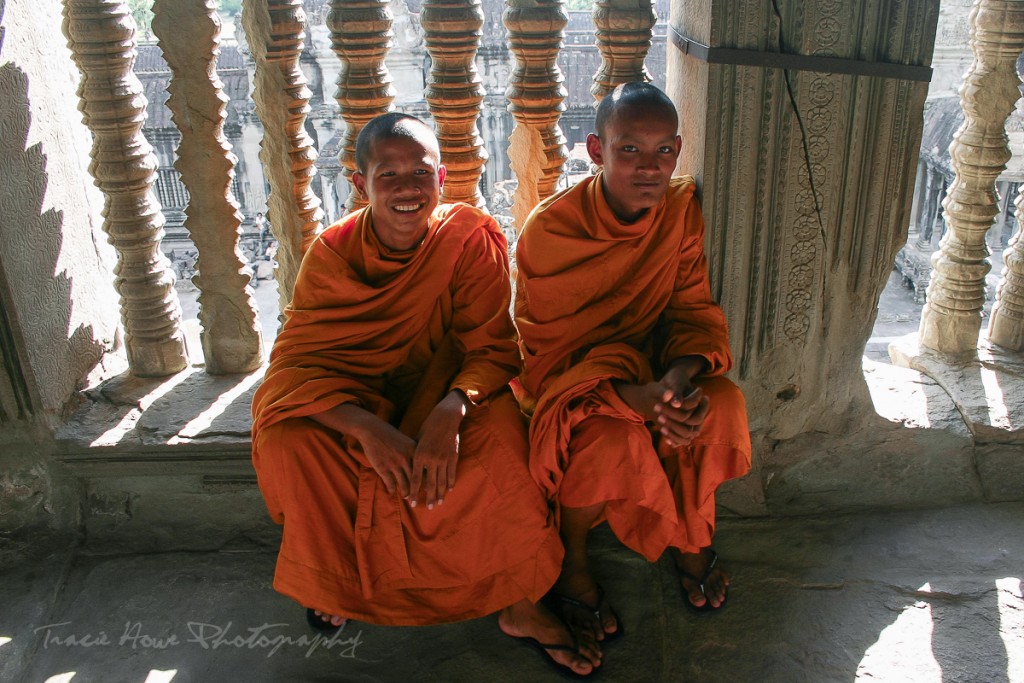
These monks in Cambodia were fine with me taking their photo after I asked.
Compensation
From Africa to South America, people will allow you to take photos of them only if you give them something in return. Usually $1 USD is acceptable, so it’s a good idea to keep several one dollar bills on you when you’re out shooting. You are essentially paying a model for a short session, and $1 can go a long way in some places.
Sometimes, especially for kids, it’s nice to offer something other than money. Perhaps crayons or paper to draw on. It makes me feel better to offer something in exchange, but there is always that risk of the cheesy smile. The go-about-your-business gesture doesn’t translate very well sometimes.
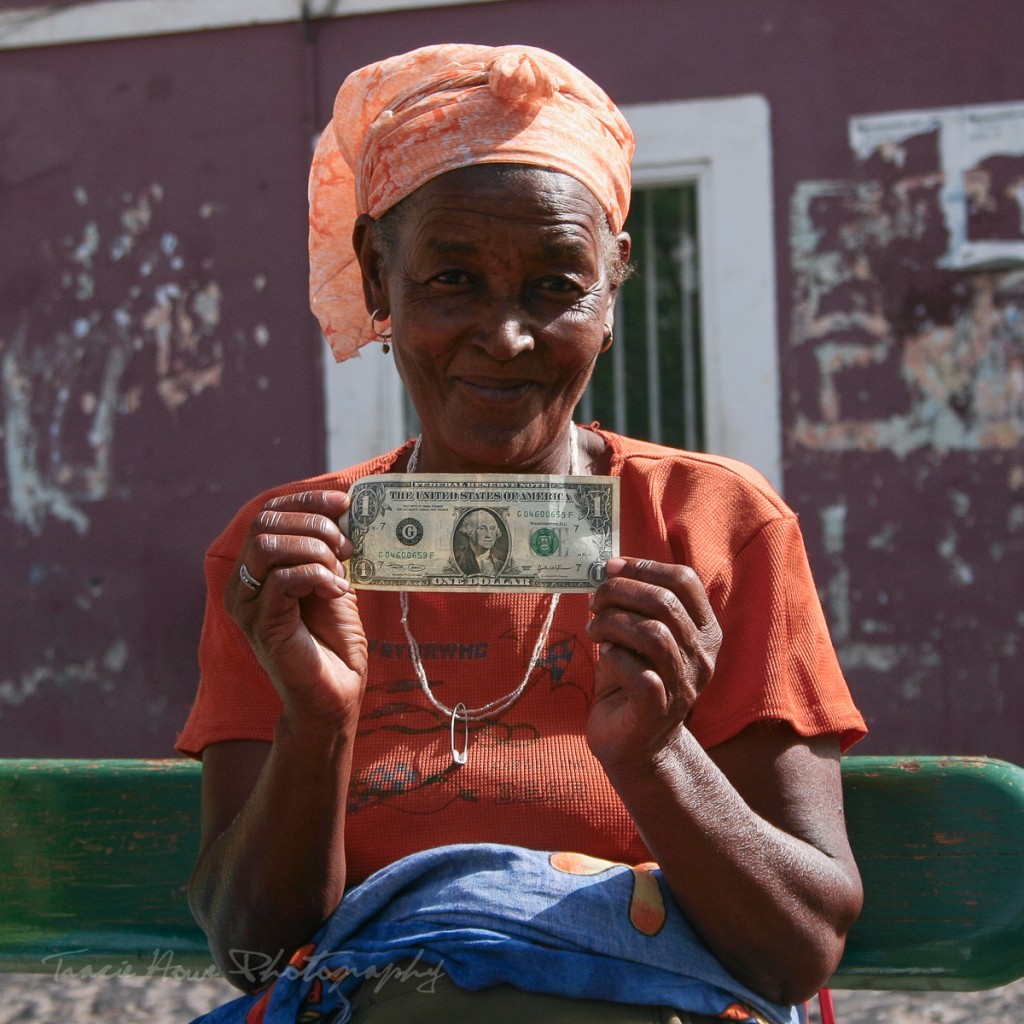
This African woman requested a dollar for her trouble, but she took that to mean she should pose with the dollar. Oh well, the light was no good anyway.
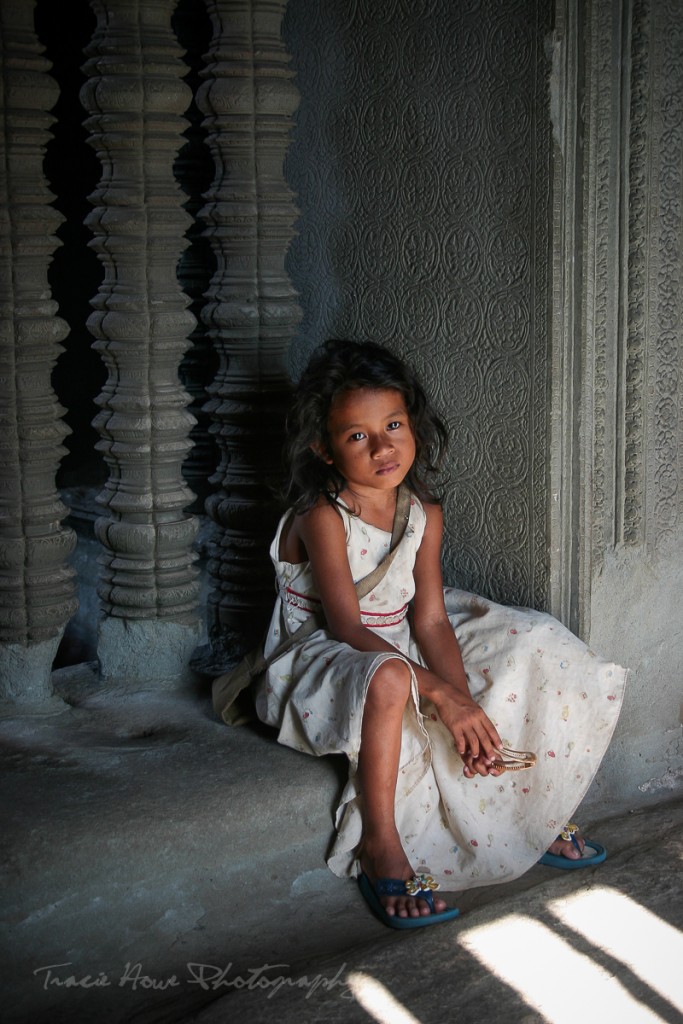
I gave this girl crayons and in return she gave me a huge, cheesy grin. I managed to communicate to her that she didn’t need to smile at me and finally got this shot.
My very favorite exchange to make is a photo for a print. Promising to mail a print in the future can be difficult to arrange if communication is a problem or if the person doesn’t have an address, but it’s worth trying. Some families will never have any photos of their children and they would likely treasure such a gift for their entire lives.
Another way around this is to bring a polaroid camera. You can get a Fujifilm Instax mini camera and several sheets of film for less than $100 (You can find a handy link to it here. FYI, buying anything via the link below helps to support Tracie Travels! :) ).
Something so small and affordable is easy to add to your travel bag and your photo subjects will be more than delighted! Even showing a digital image on the back of your camera can work as a friendly gesture in exchange for a photo.
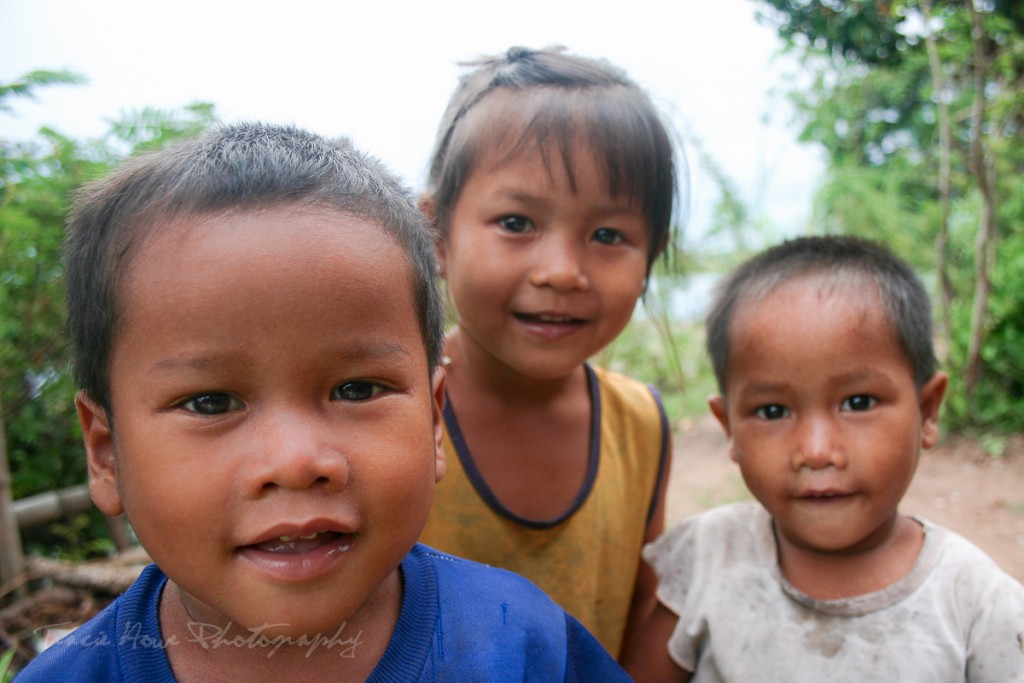
These Laotian kids were SO excited to have their photo taken and then to see it on the back of the camera.
Distance
In my opinion, the best way to capture every day life while you’re traveling (or even at home), is to back away from it. Using a long lens, like a 70-200mm, allows you to shoot from a respectful distance. The idea behind this is to be unobtrusive so as not to spoil that natural moment by making yourself known. You’re essentially being sneaky with this method, but it works well and your chances of making someone uncomfortable are much lower. If you feel too creepy, you always have the option of asking permission after you take the shot. It’s a good idea to get your settings right before you begin shooting, so you’re less likely to draw attention with multiple attempts.
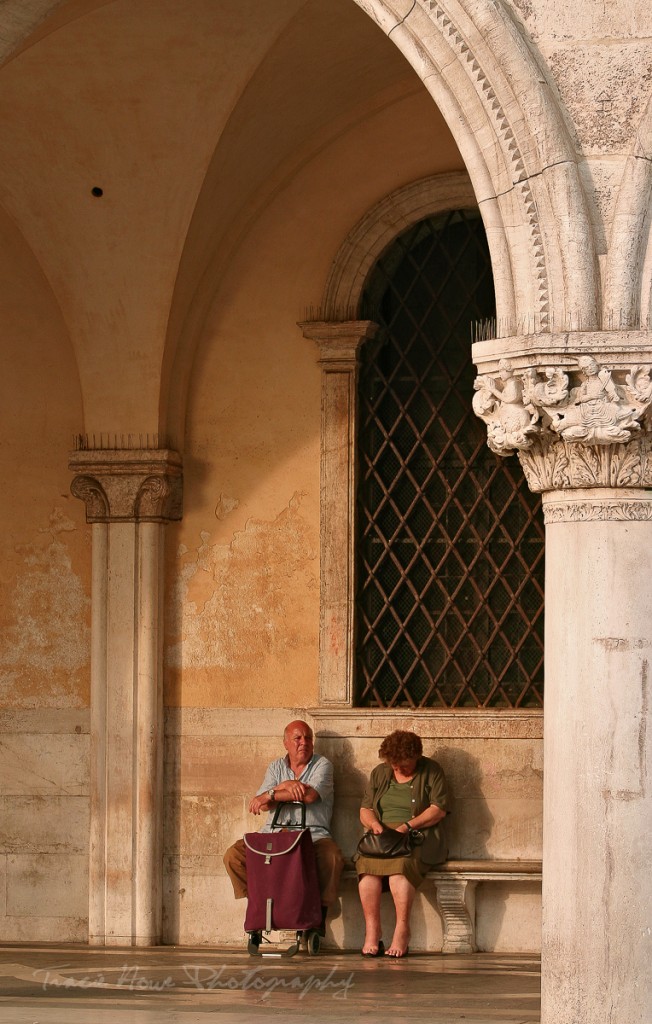
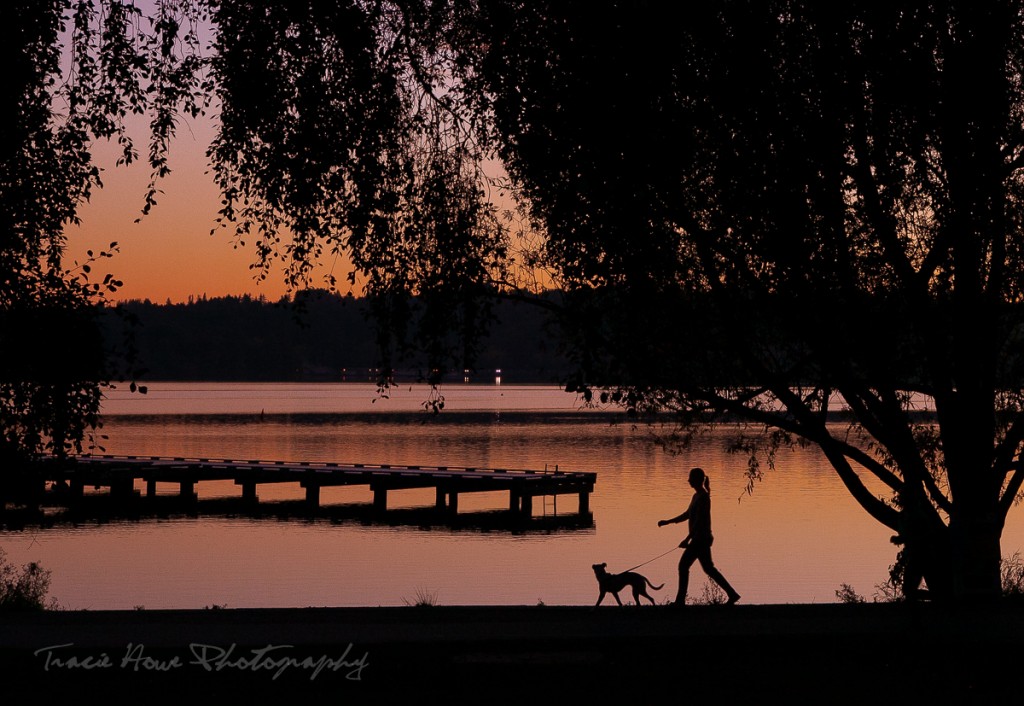
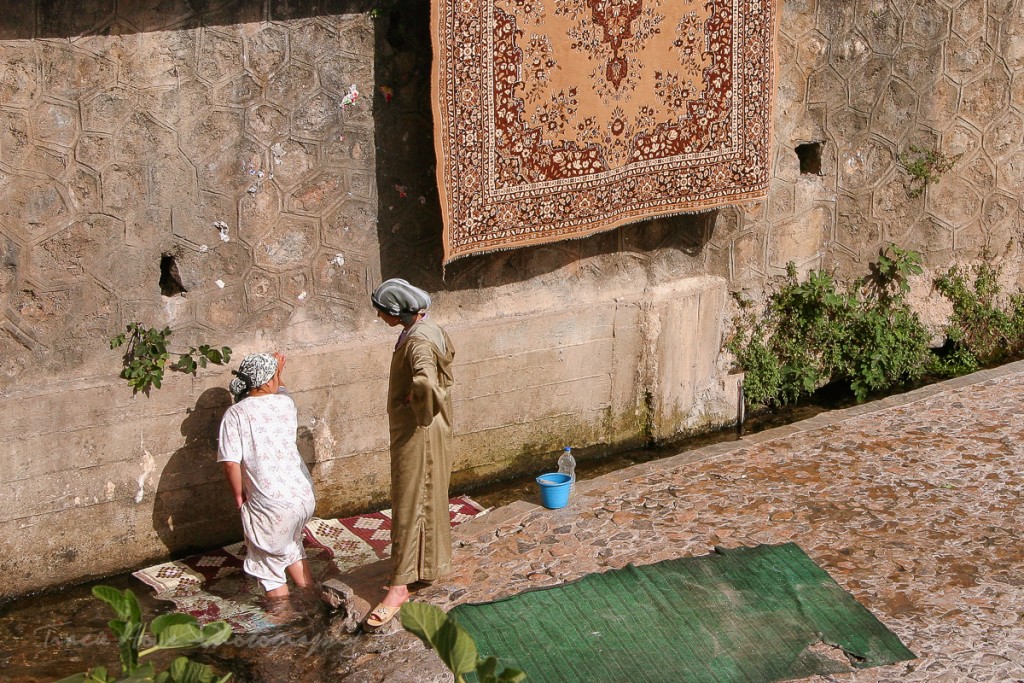
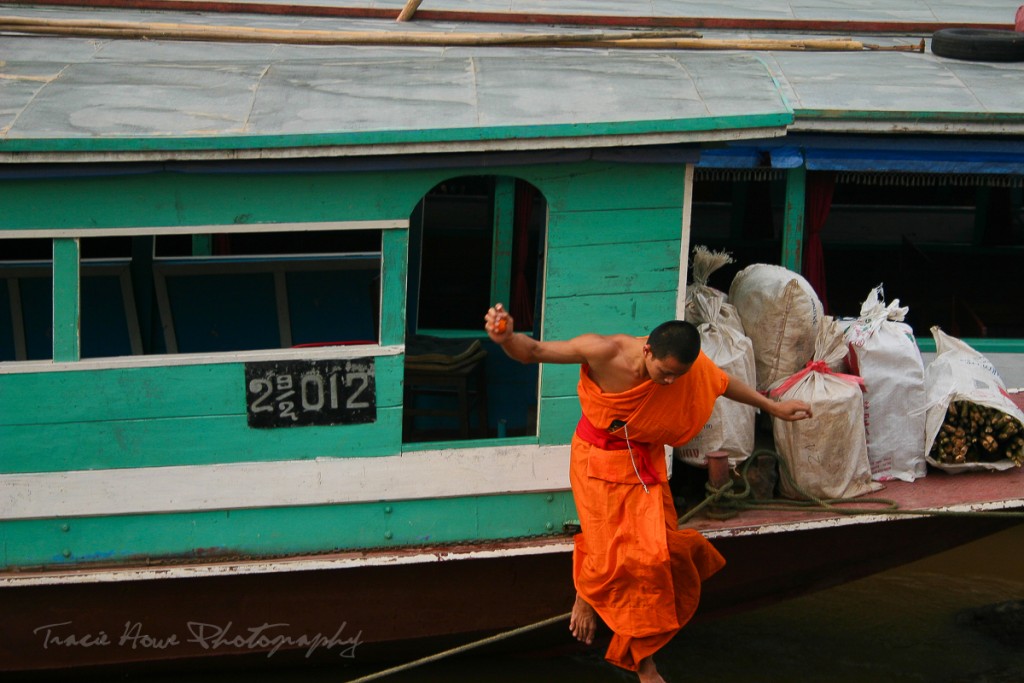
If someone does notice that you’re photographing them, you can slightly move your camera to the side as if you’re looking for the right shot, or just walk away. However, a more honest solution to being caught is to approach them and ask if you may take a photo. Again, it’s asking permission after the fact, but if granted, it also works as permission to continue. ;) If not granted, at least you tried. You may get a smile by interrupting the moment, but sometimes that’s okay.
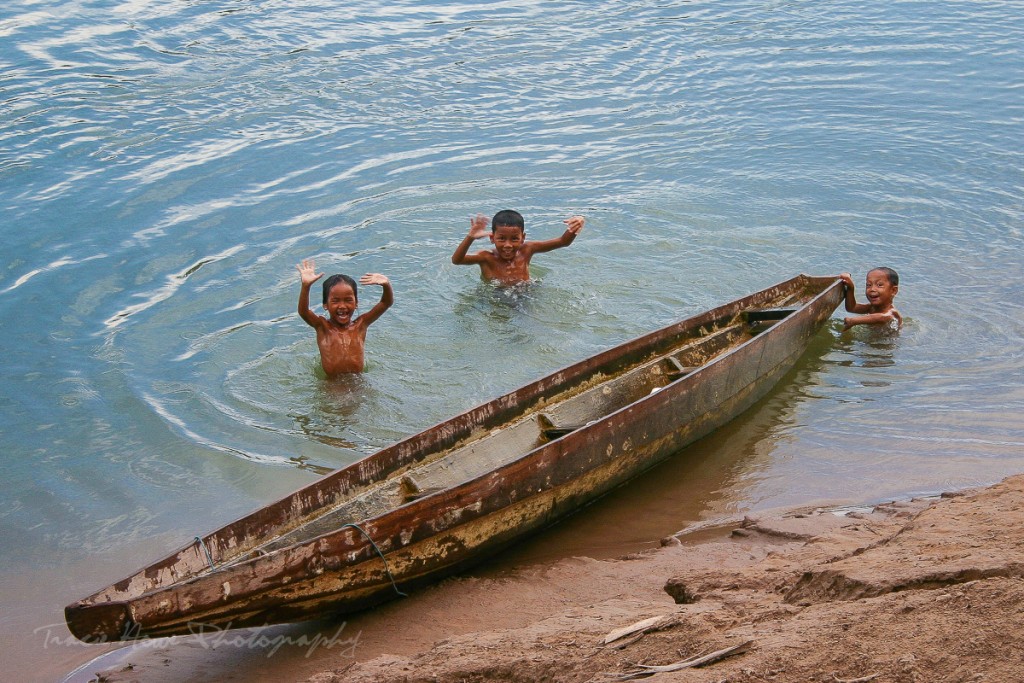
Sometimes you just have to accept a smile and wave.
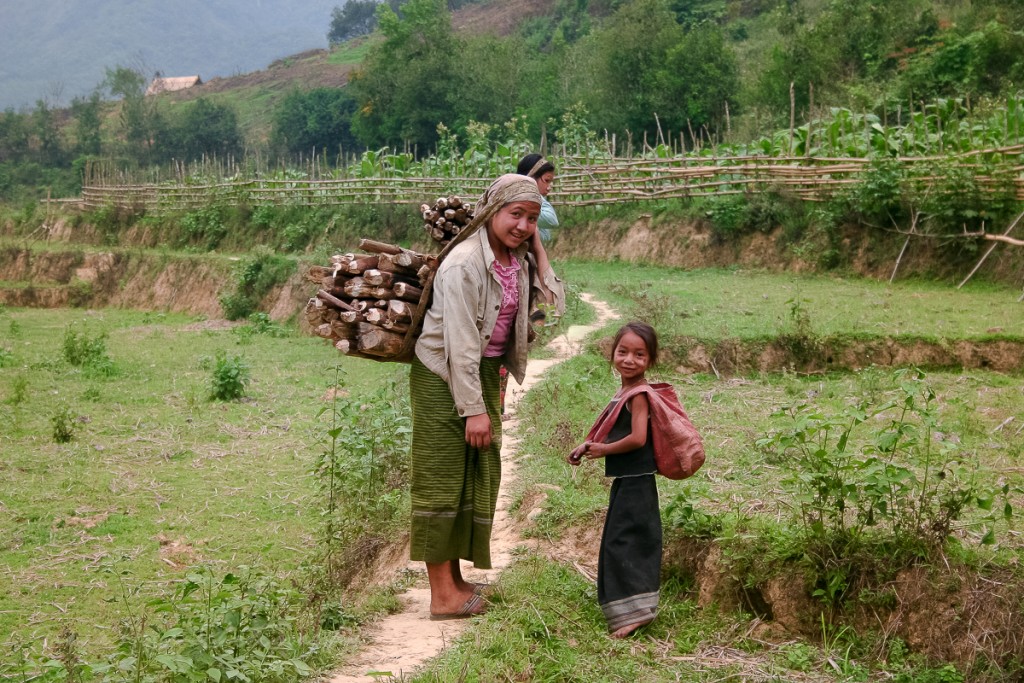
Another distance method is to “shoot from the hip” as you’re walking around. This will probably require a partially automatic setting, such as Shutter Priority (Tv on a Canon, S on a Nikon) so that your speed is fast enough given a variety of lighting conditions and moving subjects. If your camera allows it, you can set an Auto ISO as well. Keeping your camera down, at your hip and shooting wide enough will essentially give your subject that respectful distance. This is not my favorite technique, because I feel a little too sneaky, like I’m trying to get away with something. Your chances of getting a nice shot are a lot lower, but some people really enjoy this tactic, especially for street photography.
A similar idea is to keep your camera down without drawing attention to it and shooting only when you’re ready. You have to be stealthy to do this, but it can be another less-intrusive approach.
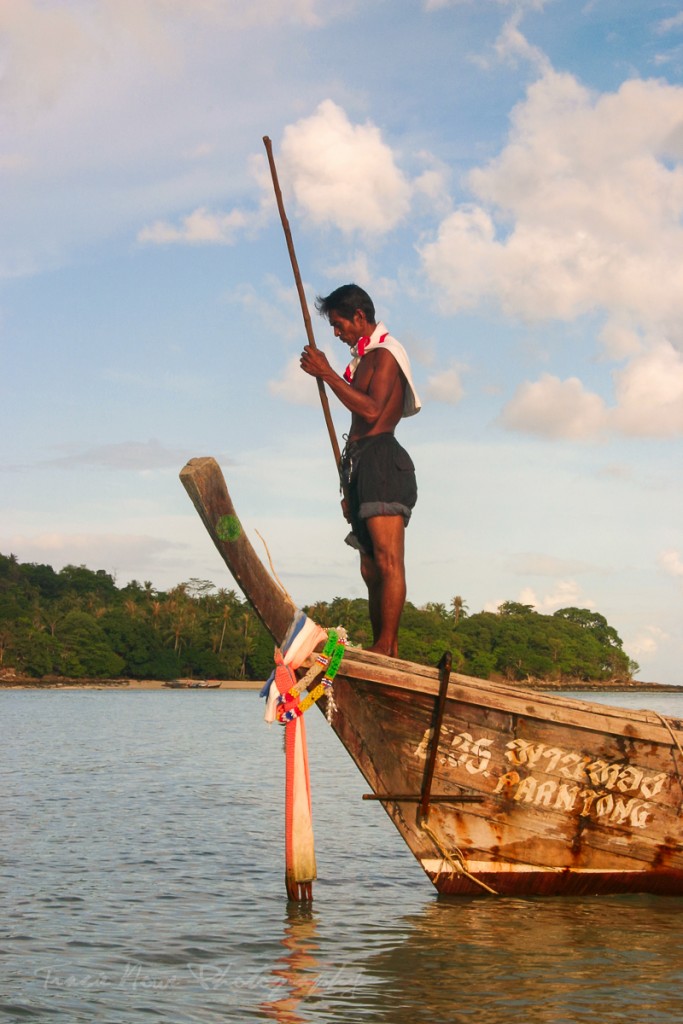
A fisherman slowly guiding his boat down the river. I didn’t make it obvious that I was taking a photo of him and he didn’t appear to notice me.
Common Sense
The best approach for respectfully photographing people while traveling is to use your common sense. Put yourself in their shoes… how would you feel if people kept coming up to you and taking photos whether you liked it or not?
For a natural shot, I believe it’s best to avoid an interaction with some kind of distance tactic. You can always ask after taking the photo if you feel uncomfortable. If you’re more outgoing and don’t mind rejection, try asking upfront. You do risk interfering with the natural moment, but if you hang around long enough people will relax and you may still get your shot. Just do your research first and then feel out each situation.
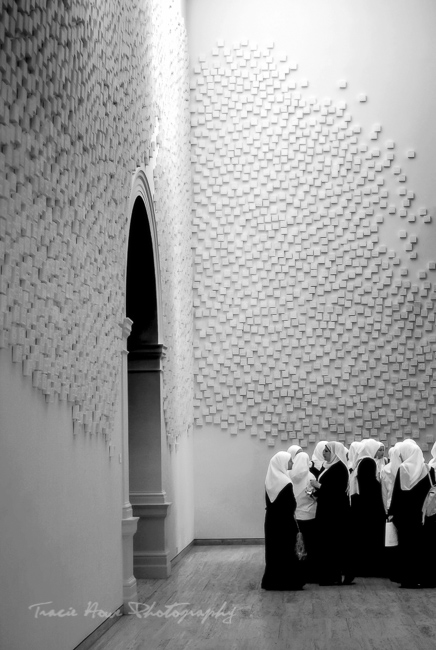
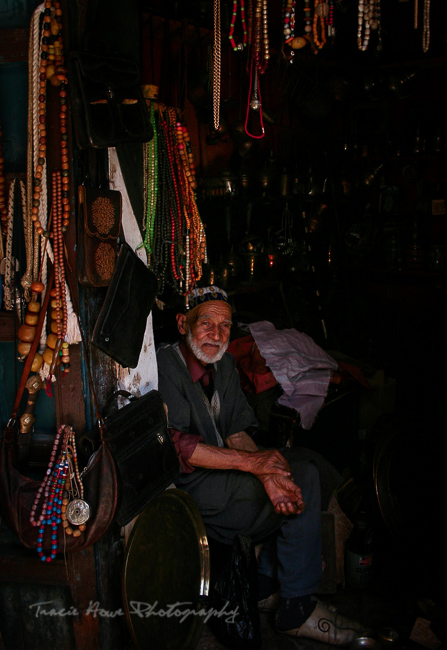
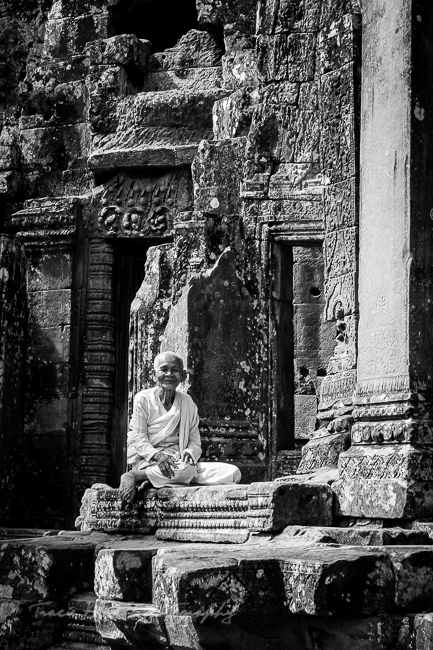






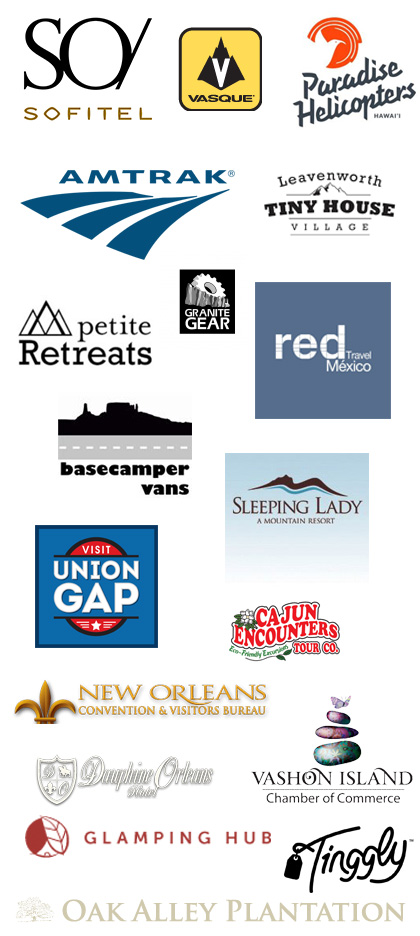
Carolann & Macrae - One Modern Couple - This is fantastic and an issue we rarely see touched on. We always struggle with taking photos of people, how close we can get, trying to get the natural shot and trying to avoid any confrontation. It’s so funny how many times we’ll ask to take a photo of someone and they’ll go from a serious face, perfect for the task and location to a huge smile and thumbs up just because the camera is on them. So difficult to communicate to just be natural so we can snap the candid!
traciehowe - Thank you for your comment! This is so true! Another tactic I forgot to mention is communicating with the person first to get a sense of how well you can communicate with them at all. Then, if you think you can get the point across that you want them to ignore you, go ahead and explain what you want. Maybe even walk away for a bit and come back in a few minutes after they have returned to what they were doing. It’s asking permission way in advance in this case, but at least you have it. This can obviously be more complicated and would only work with good communication.
Gabby @ theglobewanderers.com - Great post Tracie – your photography is just stunning. I’ve always struggled with this… people photography is my absolute favourite. Capturing a look, a moment and a history through a persons eyes/body/expression is an art that I’d love to master. But I never want to be rude so usually just go with the sneaky ‘pretend i’m taking a photo of that bird flying past’ and then bosh… after reading this I’m going to change my ways. Real conversations with real people for real, guilt free photographs is the way forward.
Thanks Tracie!
Gabby
traciehowe - Thanks Gabby! Just the fact that you have these thoughts means that you have good intentions. I often have an internal debate with myself – Do I capture this moment or do I interrupt and hope the moment persists? It is a struggle!
Natalie - Hi Tracie, Great tips you have here! Beautiful pictures too!!!
I always question myself: If was me on the other side of the camera. How do I fell? And a smile always help with the approach.
The only situation that I don`t feel comfortable taking pictures is during religious celebrations.
cheers
traciehowe - Thanks Natalie! Yes, it’s always a good idea to imagine yourself in the other person’s shoes. I think the cultural expectations can vary a lot (see Nancie’s comment) so sometimes it might be hard to imagine. Great point about the religious celebrations! There are restrictions sometimes, so it’s a good idea to do some research about a religious site or ceremony before snapping away. I would also avoid taking photos during a prayer or a funeral service out of respect for the participants.
Travel-Ling - Really great post! I didn’t realise that you “technically” can take and post images online of people in a public space. I was always a bit afraid of what the implications were there, that I often avoided it!
Your photos are absolutely amazing and I hope I can get to a level where I can capture similar moments so seamlessly and with so much expression.
traciehowe - Thank you so much Travel-Ling! The laws may vary around the world, but you’re pretty safe to post things online if you are not selling the image itself. Think about how many people walk around with cameras everyday and share photos to Facebook or Instagram. A blog is no different. The worst that can happen is someone finding their photo and asking you to remove it.
Nancie - Excellent advice, and your photos are gorgeous. I’ve lived in Korea for a long time, and generally Koreans hate having their photos taken. I’ve never had Koreans try to take shots of me in public (at least not that I know of). However, the Chinese are quite bold when it comes to photographing, and don’t bother asking. I was quite surprised to have a man and his daughter both clicking away with their camera pointed a me just this past weekend. We did end up speaking and they were very nice, but I found it strange to be focus of their picture taking. :)
traciehowe - Thank you Nancie! That’s interesting to hear about the differences in cultural expectations of photo taking for Koreans and Chinese. You reminded me of a moment where I was also the focus of a photo in Venice of all places. They asked me first, but maybe because half of the family came over to pose with me. It was very funny! I believe they were also Chinese. :)
Kimberly Erin - This is a great and well thought article tackling an issue I certainly, and I am sure others are, inherently concerned with. I am never sure how to approach people to take pictures of, and what their comfort zone is…and I even at times feel uncomfortable with paying people 1$ for a photo of their everyday life. A great, very interesting piece.
traciehowe - Thanks for your comment, Kimberly. I’m glad you enjoyed the post. I also feel funny when someone asks for a dollar, but from that person’s perspective, it probably doesn’t feel as weird.
Chris - Great tips, and a wonderful show of respect.
The other thing that may be worth mentioning, is to take even greater care when it comes to people (and especially places) of military importance.
In some countries whilst it may not be officially illegal (although it often is), it can still lead to awkward complications!
traciehowe - Thanks Chris! Good point about the military places. I did want to focus on people in this post, but where there are military places, there are guards to be aware of. You should always be observant when in an unfamiliar area. Sometimes there will be signs prohibiting access or photography, and sometimes you may not even realize you are near a military building until you see these signs… or the guards.
The Educational Tourist - What a great post with such wonderful information. I learned a lot. Love your photos!
Natalie, The Educational Tourist
traciehowe - Thanks Natalie!
Gemma Two Scots Abroad - Wow Tracie, this is the first of me seeing your photos and I am mighty thankful for it! I saw a horrible situation where a tourist gave her boyfriend her camera and then crouched down next two residents of the Uros Floating Islands in Peru. The woman covered her face and looked away and the man turned his head. You know what the tourist did? She put her arm around them and tried to pull them in closer. Made me sick!
traciehowe - Thanks for your comment Gemma! :) As for that photo situation in Peru, it’s hard to believe some people can act like that. No respect whatsoever!
Bethaney - Flashpacker Family - Your photos are amazing Tracie! Really beautiful.
traciehowe - Thank you so much, Bethaney! I appreciate that.
Anne - Great tips! Definitely pays to have a bigger lens but as you said most importantly to be respectful and read each situation individually. That’s too funny that lady posed with the dollar.
traciehowe - Thanks, Anne! At the time, that dollar shot was a shrugging, oh well moment for me, but I’m glad I was able to use it here to demonstrate how happy it can make someone.
Rob - It’s great that even in photography, you have your own ethics and respect them like trying to get in their shoes. I think the best shots are when you don’t feel any guilt taking it.
traciehowe - Thanks, Rob. It’s hard sometimes, especially when you really really want a shot. But, I’d rather feel good about getting a good shot than have some moral dilemma about it later.